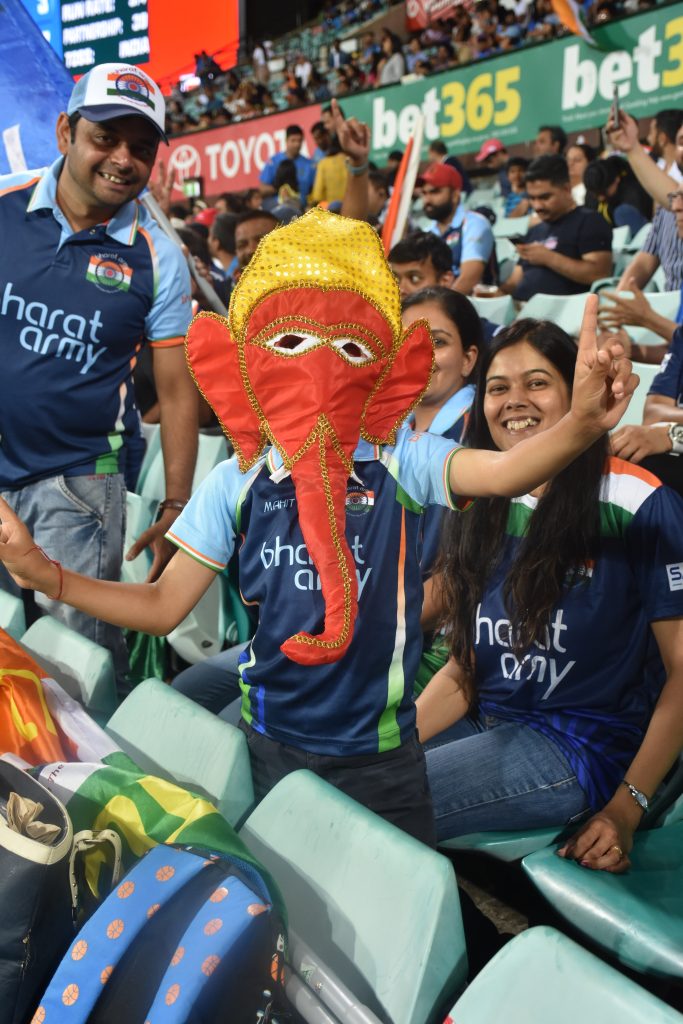Cricket originated in England, but has been spread worldwide by British soldiers and settlers in the past few hundred years.

It is now the second most popular sport in the world in terms of number of fans, after soccer.
This spread has been most successful in the Indian sub-continent, which is now considered the epicentre of world cricket.
This region includes countries such as Bangladesh, India, Pakistan and Sri Lanka.
According to the International Cricket Council (ICC), 90% of the world’s cricket fans are from the sub-continent.

History of cricket in the Indian sub-continent
Cricket was introduced to the Indian sub-continent by sailors and traders from the East India Company in the early 18th century.
The first recorded cricket match in this region was played between British sailors in western India in 1721.
Introducing English sports and traditions was intended to assert British dominance and cultural superiority. However, Indian elites embraced cricket as a way to gain favour with their rulers.
Over time, cricket became popular with the entire population.
Modern popularity
Cricket is now the most popular sport in countries such as India, Pakistan, Sri Lanka, Bangladesh, Nepal and Afghanistan.
Cricket matches between India and Pakistan are considered one of the biggest sporting events in the world, and are regularly watched by nearly half a billion fans.
While cricket is also very popular in other successful cricketing nations such as Australia, South Africa and the United Kingdom, it does not enjoy the same unrivalled status as it does in the Indian sub-continent.
Cricket as religion
Cricket is now a hugely important part of the region’s culture and identity.
It has the ability to cut across regional, ethnic, social class and religious divides, and unite countries in a way no other sport or cultural institution can.
Indeed, cricket has been described as a religion, particularly in India where it brings people of all faiths and backgrounds together.
While politicians and religious leaders in the region have used the popularity of cricket to their advantage, “cricket diplomacy” has also been used to cool tensions and diplomatic issues, particularly between India and Pakistan.
It even has the power to temporarily stop civil wars. In 2007, the Tamil Tigers militant group declared a ceasefire with the government of Sri Lanka for the duration of the Cricket World Cup.
Why is cricket so popular?
Cricket can be played anywhere. In large South Asian cities, it is often played in cramped spaces such as rooftops, markets and busy streets.
Variations such as “tape ball cricket” and “street cricket” mean players can simply use a rubbish bin, milk crate, or marks on a wall as the wickets.
The bat can be a stick, and a rubber or tennis ball can be taped to ensure it deviates in the air to make things more challenging for a batter.
This softer ball means equipment such as pads and helmets are not needed.
Many of South East Asia’s cricket legends such as Wasim Akram and Sachin Tendulkar first honed their skills in chaotic street games that required quick reflexes and improvisation.
Winning the Cricket World Cup in 1983 (India), 1992 (Pakistan), 1996 (Sri Lanka) and 2011 (India) made cricketers heroes and role models for new generations.
A lack of success in other sports – except India and Pakistan in hockey, particularly during the 20th century – means cricket has little competition for the hearts of sports fans in the region.
Media momentum
Huge media coverage and sponsorship across the sub-continent has ensured significant money and resources have been invested back into cricket.
For instance, the Board of Control for Cricket in India (BCCI) has previously earned billions of dollars over a five year period from lucrative television rights.
Much of this money is from the Indian Premier League – a Twenty20 competition that has quickly become the biggest cricket league in the world.
Similar successful (but not as profitable) T20 competitions have been set up in countries such as Bangladesh, Pakistan and Sri Lanka.
The majority of the ICC’s revenue now comes from India. Consequently, the BCCI has increasing control over the ICC and its decisions.
Additionally, India will be given 38.5% of the ICC’s profits in the 2024-2027 cycle – 105 nations will share the other 61.5%.
The BCCI have invested their profits in cricket stadium upgrades, centres of excellence and world class training staff .
While these investments help build future cricket pathways and facilities for the next generation of aspiring Indian cricketers, the ICC profit split has been criticised for making the richest countries richer and missing the chance to grow the game in other countries.
What about women’s cricket?
Cricket has the potential to be even more popular in the region if it embraces gender equality. One example of this would be Afghanistan, if the Taliban lifts its current ban on women playing cricket.
Countries such as Australia have refused to play men’s cricket matches against Afghanistan until conditions for women and girls improve.
Female cricketers in the Indian sub-continent often have to deal with barriers such as reduced funding and salaries, death threats, sexism and conservative gendered expectations.
However, the success of women’s teams has resulted in increased acceptance of women’s cricket in the Indian sub-continent in recent years.
Notable recent initiatives include the BCCI launching a successful women’s T20 competition in 2023. The recent ICC T20 World Cup was the first time women received the same prize money as their male counterparts.
These decisions align with the ICC prioritising the growth of the women’s game.
Continued popularity and growth
The deep passion for the game and continued success of teams from the Indian sub-continent is likely to ensure cricket’s continued popularity.
Cricket is also growing in popularity in countries like the United States, thanks to large Indian communities – in fact, the US co-hosted the 2024 T20 World Cup.
The addition of cricket to the Los Angeles Olympic program in 2028, should ensure that sub-continent cricket fans support the popularity of cricket in the years ahead.
Authors
Vaughan CruickshankSenior Lecturer in Health and Physical Education, University of Tasmania
Brendon HyndmanAssociate Professor of Health & Physical Education (Adj.), Charles Sturt University
Disclosure statement
The authors do not work for, consult, own shares in or receive funding from any company or organisation that would benefit from this article, and have disclosed no relevant affiliations beyond their academic appointment.
This article was originally published on The Conversation.







